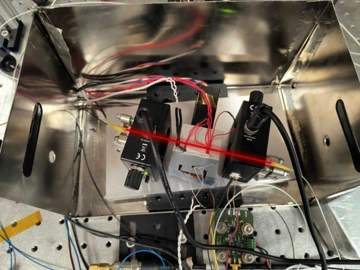Date Published: May 1, 2024
Researchers working with Jason Jones, John Paul Schaefer endowed chair in optical sciences and professor, have developed a breakthrough approach for optical atomic clocks. The new work significantly reduces the complexity of traditional designs while maintaining high accuracy and stability. By utilizing a single frequency comb laser, this new clock design eliminates the need for multiple complex laser systems, making it more practical for real-world applications.
“Over the last two decades, many great advances have been made in the performance of next generation atomic clocks,” said Jones. “However, many of these systems are not suitable for use in real world applications. To take this advanced technology out of the lab, we use a simplified design in which a single frequency comb laser acts as both the clock’s pendulum, or ticking mechanism, and as the gearwork that tracks time.”
The study, published in the journal Optics Letters by Optica Publishing Group, highlights the potential for this simplified atomic clock design to impact various industries. The new design holds promise for creating compact and portable atomic clocks that could enhance the GPS network and potentially be integrated into everyday technology, such as telecommunications.
Seth Erickson, first author on the paper and alumnus of Wyant College of Optical Sciences, noted that this technology could eventually enable telecommunications networks to handle more data by switching between conversations more efficiently. The research team is now focused on further miniaturizing the clock and improving its long-term stability, with future applications spanning from satellite systems to potentially even consumer-grade devices. Read the Optica press release.

The new optical atomic clock based on direct frequency comb excitation, which is pictured above as an early prototype in the lab, achieved the same performance as a traditional optical atomic clock which relies on multiple laser systems.
Jason Jones, University of Arizona
